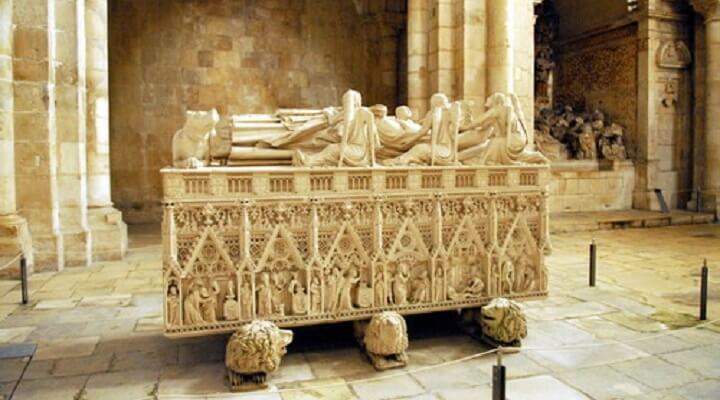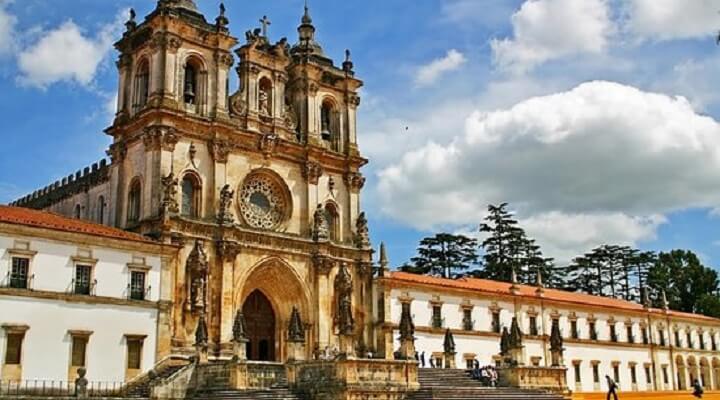Alcobaça Monastery in Portugal curiosities
Alcobaça Monastery in Portugal curiosities, we know about your interest in the Alcobaça Monastery, in such a way that in this article we focus our efforts to know a little more about it, thanks to our collaborator and friend, Joaquim Nunes, who makes us think about of the same, but above all about the Religious Orders in the Medieval period.

When, in 1153, D. Afonso Henriques, it is said, that he granted the monks these extensive territories, of course he did not grant anything, because he was a vassal of the Holy See, and a vassal has no power of decision. It was the military religious orders that conquered, so it belongs to those they serve. But let us accept that D. Afonso Henriques granted these lands because they were abandoned and also because of a promise, because life was very rough and difficult, it was only now that it was no longer a border with Muslims.
The conquest of Santarém, Lisbon and the surrender of the castle of Sintra, will draw a well-defined border from the Tagus River and to the north with the protection of the castle of Leiria. Therefore, the conditions were created for peasants, masters or traders, monks to start working.
Burping thickets was a priority, populations from the north were arriving, especially people without resources, but also adventurers. The excellent organization of the monks, leads to the creation of coutos and the famous farms, with the indispensable manpower of the converted brothers, who sometimes, at the beginning, joined them.

In sec. XIV all lands were organized and divided between the Abbey and the foreiros. But the monastery was not confined to the land donated by D. Afonso Henriques, not only were the coutos enlarged, but the whole province of Extremadura was dotted with couples, estates, vineyards, even the abbey’s farms, its domain was always growing.
Cereals were stored in storage structures that were scattered on their land, in order to prevent cereal crises, so frequent during the Middle Ages, and in the years of food shortages, these products were highly valued.
But retaining cereals was a matter that was resolved, but products that did not allow prolonged storage still required an answer, and that would be reaching urban centers.
The Abbey advances to plant vineyards, vegetable gardens, orchards in peri-urban spaces of all population centers, simultaneously finding the way to its Sunday expansion, leaving a strong mark in the possession of numerous houses, shops, stables, etc.
It is true that the most attractive nuclei were Lisbon and Santarém, but access to Leiria was not to be underestimated, so Leiria will be filled with properties from the monks of Alcobaça, transforming the region around Leiria, into a dense patch of monks’ properties , in addition to the oil mills and wine presses.
For all this to work, necessary infrastructures, storage and places for sale to the public were created, hence the construction of houses and barns, and thus Lisbon, Santarém, Leiria, Torres Vedras, Obidos, Beja, were the headquarters of an important Alcobaça supermarket.
But in order for all of this to work, it was necessary to have adequate and human resources for the administration of goods, collections, outlets, money collection, etc.
Hence, when I write about these themes, I place the Church, as the creator of everything, the banking system, factories, warehouses, etc. And I don’t think I’m offending anyone.
Naturally, all this work could not be done only by monks, the Abbey had procurators, lay people or religious to do it.
The changes appear, and the Abbey of producers, become landlords, leasing their properties to third parties, but always in cash, thus freeing themselves from the administrative part, and the revenues arrived, although reduced in absolute value, but free from any charges, and most importantly converted into currency.
It turns out that the granaries and houses where the monks once settled were now continued, but leased, which means paid in cash, although the existence of the abbey also had its spiritual function, and from quite a distance, people arrived with their offerings and donations of various types.
In addition to the monastery, and its entire complex in Alcobaça, the monks held a vast territory of coutos, which only in the vicinity included thirteen villages that we can still see their legacy.
Quinta do Cidral, Barrio, Quinta do Conde, Alfeizerão and S. Martinho do Porto, Cela, Maiorga, Chiqueda, Turquel, Alvorninha, Santa Catarina and Quinta do Vimeiro, these places are coutos, farms and ports. Dressing room, a place that gets its name because it was here that the monks’ garments were made. So: series production.
Come and visit the Monastery of Alcobaça in Portugal curiosities now, just click here !!!!




